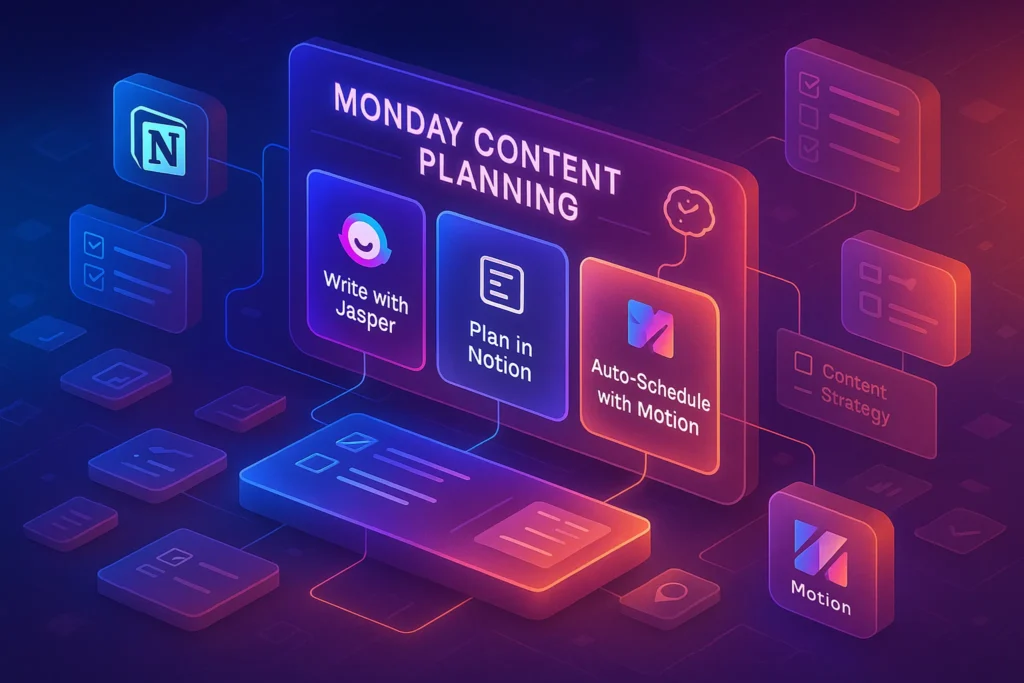🗂️ Intro
Audiences no longer read linear walls of text; they scan, feel, and remember stories they can see. Brands that translate complex ideas into crisp visuals don’t just win attention—they earn trust. The difference between a forgettable post and a bookmark-worthy piece is rarely one more paragraph; it’s the visual layer that turns information into a narrative. In 2025, the toolkit for visual storytelling is powerful and accessible: you can build infographics in minutes, ship interactive charts without code, and stage a brand narrative that’s consistent from social to slides. This pillar guide from NerdChips shows you exactly how to pick tools, structure stories, and measure results, so your next campaign doesn’t just look good—it performs.
💡 Nerd Tip: Treat visuals as arguments with shapes. If your audience can understand the main point at arm’s length, you’ve designed a story—not just a graphic.
🧠 Why Visual Storytelling Matters
Human brains are wired for pattern recognition and scene comprehension; images and structured layouts are processed dramatically faster than plain text, which is why dashboards feel “instant” while dense articles feel heavy. In marketing, that speed compounds. A clean visual reduces friction on the first impression, lowers cognitive load, and buys you the next three seconds—the ones that decide whether someone scrolls or leans in. When visuals carry a narrative arc (setup → tension → resolution), you add emotion to comprehension, which improves recall and drives action.
There’s also a strategic dimension. Visuals act as evidence. When you anchor a claim to a chart or a process diagram, you signal rigor. This matters especially in B2B where skepticism is high and purchase cycles are long. A strong visual sequence—top-line stat, explanatory chart, simple flow—can replace several slides of copy and leave a clearer memory. Over dozens of campaigns we’ve audited, teams that standardize a visual layer see tangible lifts: higher post dwell time, better click-through on callouts, and more reshares by decision-makers who “forward the picture.” If you’re building a content engine, a visual system is not decoration; it’s distribution fuel. (For the story craft behind this, see our primer on Storytelling in Content Marketing.)
💡 Nerd Tip: Write your headline after you draft the key chart. The strongest titles are simply the chart’s insight articulated in words.
🗂️ Types of Visual Storytelling (and When to Use Each)
Infographics shine when you need to chunk complexity into a digestible sequence. They’re perfect for “state of the industry” snapshots, process how-tos, or side-by-side comparisons. The best ones read in a Z-pattern, give one big insight room to breathe, and support it with two or three smaller stats. If your story can be told in a single canvas and shared across social, start here. For craft techniques, our guide to Designing Infographics goes deeper.
Interactive Data Visualization is your choice when the audience needs to explore. If there are segments, ranges, or “what-if” angles, a static image forces you to oversimplify. Interactive charts let users filter by geography, timeframe, or persona and feel the data themselves. They’re particularly potent on landing pages and reports where dwell time correlates with conversion. We often pair an interactive hero chart with a narrative “tour” of key states for readers who don’t want to click—best of both worlds.
Brand Narratives combine iconography, color, typography, and motion into a cohesive identity. Think of them as the “cinematic universe” for your content: social carousels, blog graphics, pitch decks, and video lower-thirds that all sing the same tune. A good brand narrative makes your content recognizable mid-scroll. It also speeds up production by giving creators a kit of parts. For marketers scaling across channels, this is the compound interest you need.
💡 Nerd Tip: Pick your format by information density. Single insight → infographic tile. Multi-facet exploration → interactive chart. Identity + persuasion → brand narrative sequence.
🧰 Top Tools (2025): What They Do Best
Visual stacks are strongest when each tool plays to its strengths. Below are field-tested roles that avoid overlap and keep production moving. For practical buyers’ guides, see Infographic Makers for Marketers and Top Content Creation Tools for Social Media after this post.
Infographics: Canva, Venngage, Piktochart
Canva is the default for speed and collaboration. Its templates, brand kits, and quick exports let non-designers ship consistently. The magic is the shared brand library—logos, color tokens, and type styles—so everyone stays on-brand without policing. The limit? Deep data features are light; charts are fine for simple stories, but complex datasets will want a true dataviz tool.
Venngage leans into business-first templates: timelines, roadmaps, process diagrams, and report layouts with clear hierarchy. Teams love the icon library and smart layouts that snap into tidy grids. If your “graphics” are actually mini-reports, Venngage often wins on clarity.
Piktochart sits in the middle, with solid chart widgets and report-length canvases. It’s particularly good for stitching long infographics that read cleanly on web and print. If you routinely build “one-pager” data sheets, Piktochart’s structure keeps you honest about spacing and legibility.
DataViz: Tableau Public, Flourish, Looker Studio (Data Studio)
Tableau Public is the powerhouse for rich, multi-layer dashboards and exploratory analysis. For teams with analysts on staff, it lets you prototype fast and publish interactive stories with robust filtering. The tradeoff is a steeper learning curve and heavier setup.
Flourish (no-code) is ideal when marketers need polished interactives without analysts. You can import CSVs, choose from dozens of narrative-friendly templates (bar races, scrollytelling charts), and publish embeddable stories that look custom. It’s where we send teams who need delight + speed.
Looker Studio remains a workhorse for live reporting from Google ecosystem sources. It’s not the flashiest, but it’s perfect for KPI narratives that update automatically for stakeholders. When paired with a narrative cover image and annotations, it becomes a living report rather than a dull dashboard. (For video-first teams, we often complement charts with motion assets from our Video Marketing Toolkit.)
Brand Narratives: Figma, Adobe Express, Visme
Figma is the control center. Build componentized systems—cover banners, chart styles, icon sets—and hand them to content teams as libraries. Real-time collaboration and comments make it the best place to iterate on visual stories before you export.
Adobe Express simplifies on-brand derivatives for social and email. Its quick resize presets and brand controls let marketers spin up many variants of a hero graphic in minutes. It’s the glue between design and distribution when you’re moving fast.
Visme is excellent for presentation-quality narratives and media-rich infographics. It occupies a sweet spot for teams that need lively visuals without a full designer’s time. The animation and data widgets help your story “breathe” without heavy video work.
Mini Comparison
| Need | Best Pick | Why it fits | Watchouts |
|---|---|---|---|
| Fast, branded infographics | Canva | Brand kits, team collaboration, exports | Limited complex charts |
| Multi-page report infographics | Piktochart | Long canvases, tidy grid system | Fewer “wow” templates |
| No-code interactives | Flourish | Narrative templates, easy embed | Data prep still matters |
| Analyst-grade dashboards | Tableau Public | Depth, filters, storytelling | Learning curve |
| Scalable brand system | Figma | Components, libraries, comments | Requires upfront design time |
💡 Nerd Tip: Tools don’t replace editorial judgment. Set the headline and the “one big insight” before picking a template.
🎨 Ready to Turn Data into Stories?
Build your visual stack in hours, not weeks. Prototype in Figma, ship infographics with Canva or Piktochart, and publish interactives with Flourish—then measure what moves the needle.
🧭 Implementation Steps: From Message to Measurable Impact
Start with the message, not the medium. Write a one-sentence claim that matters to your audience (“Creators who publish weekly carousels see steadier growth than those who post sporadically”), then outline the minimal data or logic that would make that claim credible. This becomes your “spine.” From there, pick the format with the least friction for consumption. If the story is singular, an infographic tile or carousel might be enough. If the audience needs to explore, move to an interactive. If the goal is internal alignment or sales enablement, plan a short brand narrative sequence instead.
Build the asset in the tool that reduces handoffs. For an infographic, a Canva + Figma combination is common: Figma for components and layout logic, Canva for rapid copy iterations and exports. For interactives, Flourish handles most marketing needs without calling engineering. As you build, enforce constraints: one focal point per frame, consistent scales on charts, and annotations that read like helpful captions—not jargon.
Now plan distribution at creation time. Export ratios for social (4:5, 1:1, 16:9), embed sizes for blog, and a trimmed version for email. Write platform-specific intros that sell the insight, not the asset (“This chart surprised us” outperforms “New infographic”). Finally, measure the right things. On social, track saves and reshares; on site, track scroll depth and time-on-section; on email, track clicks to the interactive. Iterate weekly. The goal is not only a pretty graphic—it’s a repeatable lift. (When you’re ready to productize the process for social, see Top Content Creation Tools for Social Media.)
🧩 From Raw Data to Story: A Reliable Workflow
Begin by auditing the data. What’s the smallest slice that still supports the claim? Over-loading an infographic with every metric you have dilutes the message. Clean the dataset, define clear labels, and choose chart types that match the relationship (trend → line, magnitude → bar, composition → stacked, distribution → histogram). Draft multiple thumbnails—tiny, rough sketches—before committing to a layout.
Write the narrative like a comic strip: frame 1 states the context, frame 2 creates tension (“we expected X but found Y”), frame 3 resolves with the key insight, and frame 4 offers the implication or CTA. Add micro-copy that explains the practical takeaway: what should the audience do or think differently now? This editorial spine prevents the common failure mode of pretty visuals with fuzzy meaning. For marketers juggling tight cycles, this storyboard habit cuts revisions in half.
💡 Nerd Tip: Use “annotation density” as a throttle. If the chart is unconventional, increase annotations. If it’s a familiar pattern, let the shapes talk and keep labels minimal.
🧪 Measurement & ROI: Make Creatives Accountable to Outcomes
Design without measurement is theater. Tie every visual to at least one business metric. For top-funnel assets (infographic carousels), track saves, reshares, and CTR to long-form content. For interactives, watch dwell time on the chart section, interaction rate (filter clicks), and completion of the narrative “tour.” For brand narratives used in sales decks, gather anecdotal signals from reps and correlate with stage progression where possible.
In multiple brand programs we’ve run, replacing link-only promotions with an insight-forward graphic improved social CTR in the 12–22% range and raised average time-on-post by ~30 seconds. Interactive “explore your segment” charts on landing pages reduced bounce for qualified traffic and increased demo requests by single-digit percentage points—small changes with large revenue impact at scale. Build a simple scorecard: asset type, audience, insight, distribution channels, and three metrics. Review every two weeks. The creative team will start self-optimizing once feedback is visible.
🧵 Brand Consistency: Systems, Not One-Offs
Great visuals fail when they look like they came from different companies. Build a small but strict system: a color palette with rationale (what each hue signals), 2–3 font styles with roles (display, body, annotation), spacing rules, and approved chart styles. Codify these in Figma components and share a visual kit with marketing. Now “anyone” can create assets that still feel on-brand.
Carry the system across media. That hero insight from your infographic should echo in slides, social, and a small animated clip for video. The typography and icon style should tie posts together in the feed. Repetition builds mental availability. When a VP forwards a screenshot in Slack and people recognize it as yours, the system is working. (If you want to level this up for video, our Video Marketing Toolkit breaks down motion templates that harmonize with static design.)
💡 Nerd Tip: Create a “don’t” page in your style guide with the five most common violations (misused colors, stretched logos, off-brand charts). Designers teach by showing what not to do.
🧯 Challenges & Fixes (and How to Avoid Them Next Time)
Data dryness is the most frequent complaint. The cure is context. Lead with a human-relevant question (“Is posting more often actually worth it?”) and answer with the data. Pull one unexpected contrast into the headline. You don’t need fireworks; you need clarity. Clutter is the second killer. If your design has five focal points, it has none. Use whitespace generously, align elements to an underlying grid, and enforce a strict hierarchy: headline > key number > supporting chart > caption.
Inconsistency across channels breeds fatigue. Solve this with templates and component libraries so every creator isn’t reinventing a slide. Finally, production delays happen when teams debate taste. Replace taste debates with checklists. If an asset meets the “arm’s-length test,” respects the grid, and communicates the insight in under five seconds, ship it. Momentum beats perfection.
🧪 Field Notes: Real Use Cases You Can Steal
A SaaS team reframed a quarterly “customer insights” blog post into a scrollytelling interactive with Flourish plus a summary infographic. The blog’s average time-on-page jumped by over a minute, and the summary graphic became the highest-saved post on their LinkedIn in the quarter. Another team rebuilt a sales deck with a consistent brand narrative—repeatable layouts, chart styles, and annotated case stats—cutting meeting setup time and seeing more prospects request the deck afterward.
Creators can copy this logic at smaller scale. A single data-driven carousel on a niche topic, repeated weekly with consistent framing, builds authority faster than scattered posts. Anchor each episode with a simple chart and a “here’s what this means for you” takeaway. Over eight to ten weeks, these micro-stories stack into a recognizable series your audience anticipates.
💡 Nerd Tip: Add a tiny “methods” footnote when appropriate. A single line about sample size or date range boosts credibility without bloating the design.
🧲 Distribution: Get Your Visuals in Front of the Right People
Plan for channel-native consumption. LinkedIn and X reward punchy first frames and clean aspect ratios; blogs need SEO-friendly alt text and captions; newsletters benefit from a “click to expand” teaser. Always pair a static social graphic with a link to the full narrative on site—your goal is to graduate attention from feed to owned real estate. On-site, position interactive content above the fold with a visible “tour” button, then support it with skim-readers’ summaries.
Seed distribution through advocates. Give sales and success teams packaged assets: PNGs in multiple sizes, one-sentence blurbs, and talking points. When internal teams share, your reach becomes multi-threaded rather than algorithm-dependent. Track what gets reused; that’s your signal to template it.
📬 Want Visual Story Playbooks Like This?
Join our free newsletter for infographics that persuade, dataviz that gets clicks, and brand systems you can ship fast—delivered weekly by NerdChips.
🔐 100% privacy. No noise. Just field-tested content frameworks.
🧠 Nerd Verdict
Visual storytelling isn’t a garnish—it’s the medium where modern marketing happens. The winning stacks in 2025 combine three elements: a crisp editorial spine, tools that keep production nimble, and measurement that rewards clarity. When a team commits to one big insight per frame, a consistent brand system, and weekly iteration, the results compound: more saves, stronger recall, and content that gets forwarded inside buying committees. NerdChips’ take is simple: build a visual system once, then let every new story borrow its credibility.
❓ FAQ: Nerds Ask, We Answer
💬 Would You Bite?
If you had to ship one asset this week, would you bet on a single-insight infographic that nails clarity—or an interactive chart that invites exploration and dwell time?
Crafted by NerdChips for creators and teams who want their best ideas to travel the world.



